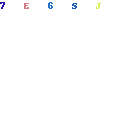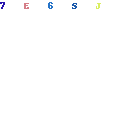Logic analyzers are essential tools for digital signal integrity analysis. They enable engineers and technicians to diagnose issues with systems that have multiple buses, inputs or outputs.
Logic analyzers differ from digital phosphor oscilloscopes in that they monitor multiple signals rather than just one analog signal at a time. Therefore, channel count, synchronization modes and measurement frequency become essential parameters.
What is a Logic Analyzer?
Logic analyzers are devices that capture, condition and display digital events produced by an electronic circuit or system. They often feature additional capabilities like storing previous data and comparing it with new datasets to provide further insight into the activity of the tested circuit or system (SUT).
Logical analyzers operate by digitizing input signals at a user-set sample rate and displaying them digitally, either as decoded traffic or state listings.
Another essential function of a logic analyzer is to capture signal timing information. In this mode, the logic analyzer uses its internal clock to sample signals.
Advanced logic analyzers with advanced signal integrity capabilities include built-in triggers that detect setup and hold time violations, glitches and other events that may compromise signal integrity at high-speed digital data rates. Triggering is an indispensable tool for troubleshooting system issues and identifying system malfunctions.
Is there Logic Analyzer Applications?
The logic analyzer is an indispensable instrument for debugging electronic devices. It displays state information, decoded traffic patterns and graphical representations of a circuit's activity.
Logic analyzers can record various signals on either one channel or multiple channels simultaneously, depending on the application. The number of channels necessary depends on your design's size and complexity as well as which protocols you plan to test.
For example, if you are testing a microprocessor's address, data or control bus, then you will likely require tens or even hundreds of channels.
Logic analyzers boast high sample rates (up to one million samples per second) and advanced triggering capabilities to visualize timing relationships between signals in a digital system. These features combine to make the logic analyzer an industry leader when it comes to meeting stringent design deadlines and quickly detecting errors.
How many are there Analyzer Features?
Logic analyzers offer a comprehensive set of features and functions that make them the go-to digital troubleshooting solution for today's embedded designers. They boast high sample rates, large memory capacities, various display and analysis options, integration with analog tools, as well as modularity.
Streaming samplers, a common feature in Saleae logic analyzers, enable digital signals to be acquired at incredible speeds. Unlike buffered logic analyzers which store data in dedicated high-speed memory before displaying and analyzing it, streaming samplers acquire signals as they occur and then display them in real time.
Automated measurement capabilities enable users to make a variety of complex, oscillo-scope-like measurements such as frequency, period, pulse width, edge count and duty cycle. The analyzer sets up the measurement, performs any necessary analysis steps and then displays the results.
Logic Analyzer Protocols: What are they?
Logic analyzers can display data in a variety of ways, from simple waveforms and state listings to decoding Ethernet protocol traffic. With their aid, you can accurately assess the performance of your electronics.
These devices are often employed to measure long-term jitter. They offer various modes for capturing and displaying data, including timing mode which allows viewing waveforms in real-time, as well as state mode which looks similar to what a receiver on a transmission bus would see.
Most logic analyzers offer a "compare" mode, which compares each captured data set against previously recorded ones and stops capture if they match. This feature proves especially helpful for long-term empirical testing.

